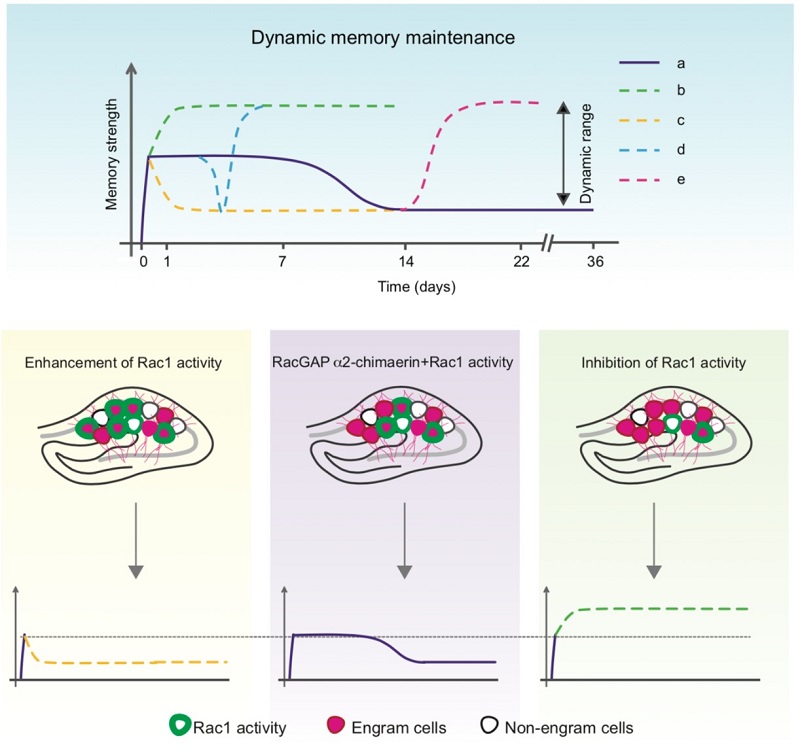On November 22, 2019, a research paper entitled “Interplay between α2-chimaerin and Rac1 activity determines dynamic maintenance of long-term memory” was published in Nature Communications by Yi Zhong’ lab. For the first time, the present study provides a novel mechanism for reversible forgetting-based dynamic memory maintenance that affords an intuitive explanation as to why LTM is still capable of being enhanced or faded long after completed formation. The research has upended perceptions of long-term memory maintenance and inspired to re-understand the nature of memory and forgetting.
Memory consolidation theory suggests that once memory formation has been completed, memory is maintained at a stable strength and is incapable of further enhancement. However, the current study reveals that even long after formation, contextual fear memory could be further enhanced. Such unexpected enhancement is possible because memory is dynamically maintained at an intermediate level that allows for bidirectional regulation. Here we find that both Rac1 activation and expression of a2-chimaerin are stimulated by single-trial contextual fear conditioning. Such sustained Rac1 activity mediates reversible forgetting, and a2-chimaerin acts as a memory molecule that reverses forgetting to sustain memory through inhibition of Rac1 activity during the maintenance stage. Therefore, the balance between activated Rac1 and expressed a2-chimaerin defines dynamic long-term memory maintenance. Our findings demonstrate that consolidated memory maintains capacity for bidirectional regulation.

Paperlink: https://www.nature.com/articles/s41467-019-13236-9
